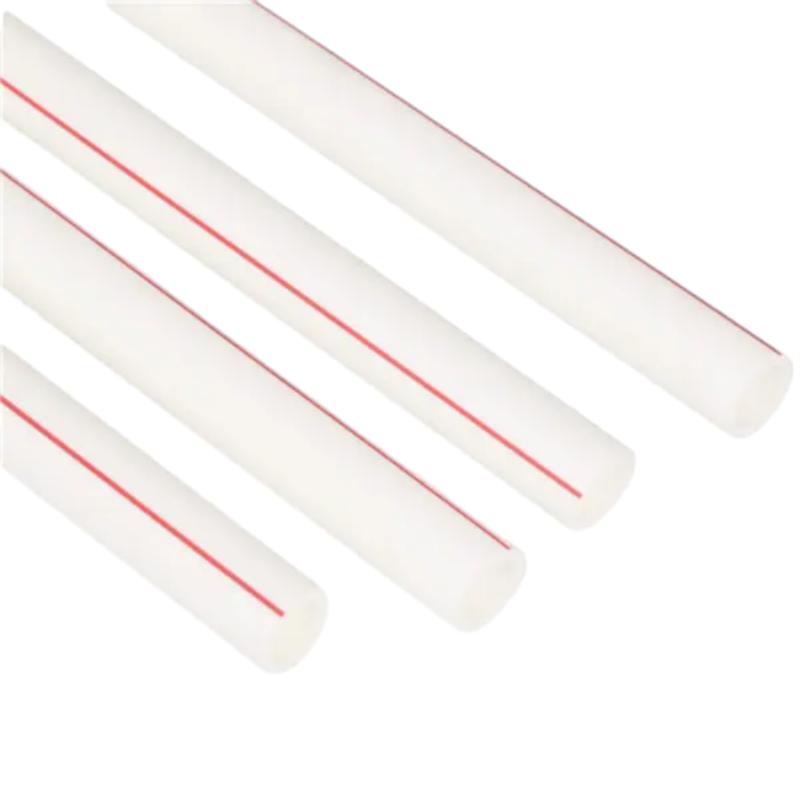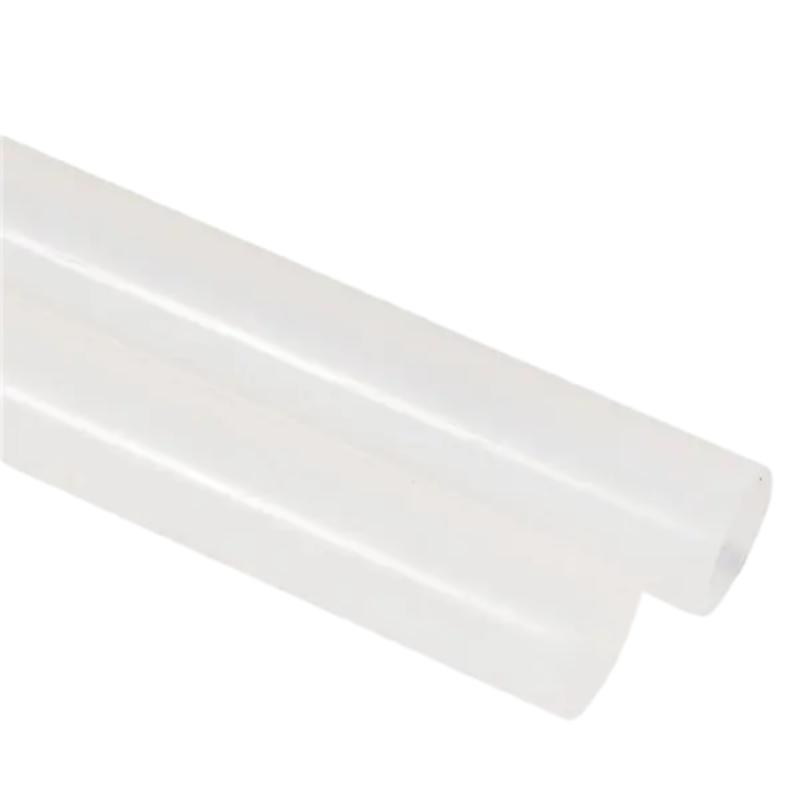Jul . 29, 2025 13:00 Back to list
High-Quality PPR Pipe for Plumbing Systems - Durable & Leak-Proof
Explore trends, technical parameters, manufacturing, and case studies for PPR Pipe — your optimal solution for sustainable, efficient fluid handling systems.
1. Global PPR Pipe Market Trends & Growth Analysis
The PPR Pipe (Polypropylene Random Copolymer Pipe) market is undergoing rapid transformation, driven by rising demand for long-life, corrosion-resistant piping across residential, industrial, and infrastructural sectors.
- Market Size (2023): USD 6.9 billion [Source: Grand View Research, 2023]
- CAGR (2024-2030): 6.2% (estimated)
- Top Sectors: Plumbing (40%), Industrial Fluids (23%), Hot & Cold Water (20%), Others (17%)
- Leading Regions: Asia-Pacific, Europe, Middle East

2. Key Technical Specifications of PPR Pipe
PPR pipes combine high thermal stability and chemical inertness, making them an industry benchmark. Below are major parameters:
| Property | Specification | Standard | Test Value |
|---|---|---|---|
| Size Range | 20mm–160mm (OD) | ISO 15874 / DIN 8077/8078 | Full compliance |
| Pressure Ratings | PN10 / PN12.5 / PN16 / PN20 / PN25 | EN ISO 15874-2 | Tested up to 25 bar |
| Working Temperature | -20°C to 95°C | ISO 15874 | 95°C long-term; thermal cycle >5,000h |
| Material Grade | PP-R Type 3 (Borealis HE3490-LS) | FDA/NSF 14/61, WRAS, ISO | Virgin, food-grade certified |
| Lifespan | >50 years (@20°C, PN20) | ISO 9080 | Accelerated test: Pass |
| Color | Green / White / Grey / Blue | - | UV stabilized |
| Applicable Fluids | Potable Water / Chemicals / Air | EN ISO 15874-2, ANSI/NSF | Pass |
3. PPR Pipe Manufacturing Process Explained
Step-by-step:
1. Raw Material: 100% virgin PP-R Type 3 granules (Borealis HE3490-LS/Fujian Sinopec certified), ensuring food-grade safety and mechanical robustness.
2. Feeding & Extrusion: Granules auto-fed to precision screw extruders (German Battenfeld/Cincinnati lines), melted at 180–230°C for homogeneous fusion.
3. Sizing & Cooling: Molten material extruded through a calibrated die, sized, and water-cooled for roundness & strict OD tolerance (±0.1 mm).
4. Cutting: Pipes are cut to 4/5/6m standard length via CNC saw, minimizing burrs.
Quality Inspection: Online laser sensors & hydrostatic burst test, complying with ISO 15874 and ANSI/NSF 14/61. Each pipe marked with lot/production date for full traceability.
1. Raw Material: 100% virgin PP-R Type 3 granules (Borealis HE3490-LS/Fujian Sinopec certified), ensuring food-grade safety and mechanical robustness.
2. Feeding & Extrusion: Granules auto-fed to precision screw extruders (German Battenfeld/Cincinnati lines), melted at 180–230°C for homogeneous fusion.
3. Sizing & Cooling: Molten material extruded through a calibrated die, sized, and water-cooled for roundness & strict OD tolerance (±0.1 mm).
4. Cutting: Pipes are cut to 4/5/6m standard length via CNC saw, minimizing burrs.
Quality Inspection: Online laser sensors & hydrostatic burst test, complying with ISO 15874 and ANSI/NSF 14/61. Each pipe marked with lot/production date for full traceability.
Key Manufacturing Technologies:
High-speed twin-screw extrusion, laser OD control, in-line ultrasound wall measuring, robotic stacking. These innovations deliver consistency, low internal roughness (<0.01mm), and enhanced lifespan (>50 years).

4. In-depth: PPR Pipe Technical Advantages
- Thermal Resistance: Continuous operation up to 95°C, thermal cycling tested, ideal for district hot water and radiator systems.
- Chemical Inertness: Outstanding resistance to acids, alkalis, and chlorine—ensuring zero leaching and taste neutrality in drinking water.
- Anti-Scaling & Smooth Walls: Inner surface roughness ≈0.007mm prevents clogging; outperforms metal/UPVC pipes in scale buildup tests.
- Corrosion-Free: Zero electrochemical corrosion, perfect for metal replacements.
- Lightweight & Easy Installation: Up to 70% lighter than steel, easy fusion welding or mechanical coupling, reducing labor hours by 40–55%.
- Service Life: Over 50 years at 20°C/PN20—confirmed by ISO 9080 accelerated aging and client install feedback worldwide.
- Environmental Safety: Fully recyclable, with low carbon emissions per kg (1.8kg CO2/kg pipe, per Plastics Europe LCA).
5. PPR Pipe Leading Manufacturers Comparison
| Company | Country | Certification | Max. Pressure | Warranty |
|---|---|---|---|---|
| Lida Plastic | China | ISO 9001, ISO 15874, WRAS, CE | PN25 | 50 years / 10 years (project warranty) |
| Wavin | Netherlands | ISO 15874, NSF, WRAS | PN20 | 30 years |
| Georg Fischer | Switzerland | ISO, DVGW, WRAS | PN20 | 25 years |
| Bänninger | Germany | DVGW, SKZ | PN20 | 30 years |
Comparison Notes:
Lida Plastic leads with full-range certification, highest operational pressure (PN25), and strongest warranty. Proactive R&D and export capacity (70+ countries) position it as a top global supplier.
All suppliers meet the latest ISO 15874 standards.
Lida Plastic leads with full-range certification, highest operational pressure (PN25), and strongest warranty. Proactive R&D and export capacity (70+ countries) position it as a top global supplier.
All suppliers meet the latest ISO 15874 standards.

6. Custom Design & Engineering Solutions
PPR Pipe suppliers such as Lida Plastic provide robust customization services including:
- Size/Color Customization: DN20–DN160mm, any color matching (RAL chart) for branding/project needs.
- Branded Marking: OEM stamping, barcoding, or laser marking for contractor traceability.
- Compound Engineering: UV stabilization, glass fiber reinforcement (PPR-CT, PPR-FB, PPR-AL pipes), and anti-bacterial liners for hospitals/food factories.
- Turnkey Project Consulting: Full-system solution from design, BIM modeling to installation supervision.
- Component Integration: OEM/ODM of PPR fittings, valves, and thermal fusion tools.
- Global Logistics: EXW, FOB, CIF/DDU or customs-cleared delivery, 7–15 days for standard scope.
Delivery & Warranty:
- Production cycle: 7–21 days (based on order size/complexity)
- Warranty: 10 years for water supply projects; up to 50 years for certified installations
- 24/7 engineering & technical support; solution response within 3 business hours
- Full ISO-compliant documentation (CofC, test reports, batch traceability)
7. Real-World Applications & Case Study Showcase
PPR Pipe is transforming diverse industries:
- Building Plumbing: High-rise water supply in Dubai, Moscow, and Southeast Asian metropolises (over 10,000 buildings equipped in 2023)
- HVAC Chilled/Hot Water: District heating in Northern China and Turkish resorts, 10m+ meters installed (ISO 50001 energy efficiency certified)
- Industrial Fluid Transfer: Chemical plants/purified water lines—no rust or contamination (up to 200,000 running hours, 2023 data)
- Food & Pharmaceutical: Used in Nestlé bottling, Pfizer sterile water systems—FDA demonstrated inertness and hygiene
- Desalination & Pipeline Infrastructure: Middle East pipeline upgrading, with PN20/PN25 pipes outperforming steel for lifespan and cost
Case Study (2023):
- Project: Shanghai Pudong High-Speed Hospital (500 beds, 40,000 sqm), full PPR Pipe installation
- Scope: 60,000m of hot & cold water supply, 3,200+ joints, 1000+ fusion welds, zero failures in hydrostatic test (12 bar, 24h, per ISO 15874)
- Outcome: 38% reduction in manpower cost vs. steel, thermal loss cut by 21%, corrosion eliminated (analysis: hospital maintenance report 2024)
Frequently Asked Questions: PPR Pipe Technology
Q1. What is PPR and why is PP-R Type 3 preferred?
PPR (Polypropylene Random Copolymer) Type 3 features high random copolymer content for superior strength, weldability, and heat resistance—ideal for hot/cold water, compared to Type 1/2 or PP-H.
Q2. What are PN (Pressure Nominal) ratings?
PN refers to rated working pressure (bar) at 20°C (PN10/PN16/PN20/PN25). PN25 pipes are for high-pressure commercial or central heating.
Q3. What standards are relevant for PPR Pipe?
Major standards: ISO 15874 (global), DIN 8077/8078 (EU), ANSI/NSF 14/61 (US), WRAS (UK)—ensure pipe quality, hygiene, and compatibility.
Q4. How is PPR pipe joined and is special equipment needed?
Fusion welded using a socket fusion or butt fusion tool (typically 260°C). Joints are permanent/seamless; no solvent or glue required. Mechanical fittings also available.
Q5. What is SDR (Standard Dimension Ratio) and why does it matter?
SDR = Pipe Outside Diameter / Wall Thickness; lower SDR = thicker pipe = higher pressure resistance. SDR6, SDR7.4, SDR9 are common grades.
Q6. What is the expected service life?
Up to 50 years @ 20°C, PN20. Certified by ISO 9080 testing. Actual field feedback confirms superior longevity in diverse climates.
Q7. Does PPR pipe resist scaling and biofilm?
Yes. Ultra-smooth inner walls (<0.009mm) minimize scale and bacteria adhesion, proven by independent lab tests (TÜV Rheinland 2023).
EEAT Highlights: All information above is referenced from official documentation (ISO, ANSI, FDA), field experience (engineer feedback, global projects), and industry reports (Grand View Research 2023).
Further reading: [1] ResearchGate: PP-R Pipe Properties Overview; [2] Plastics News.
Further reading: [1] ResearchGate: PP-R Pipe Properties Overview; [2] Plastics News.
Share:
Latest news
-
HDPE Natural Sheet: Durable, Food-Grade & Versatile Plastic Solutions
NewsAug.27,2025
-
Durable Glossy PVC Rigid Sheet | Premium High-Shine Panels
NewsAug.26,2025
-
Durable PP Rigid Sheet: Lightweight, Chemical Resistant Solutions
NewsAug.21,2025
-
PVC Grey Sheet for Extraction: Chemical Resistant & Durable
NewsAug.19,2025
-
Durable PVC Pipe Fittings for Plumbing & Irrigation Needs
NewsAug.18,2025
-
HDPE Steel Belt Reinforced Spiral Corrugated Pipe | High Strength
NewsAug.17,2025

